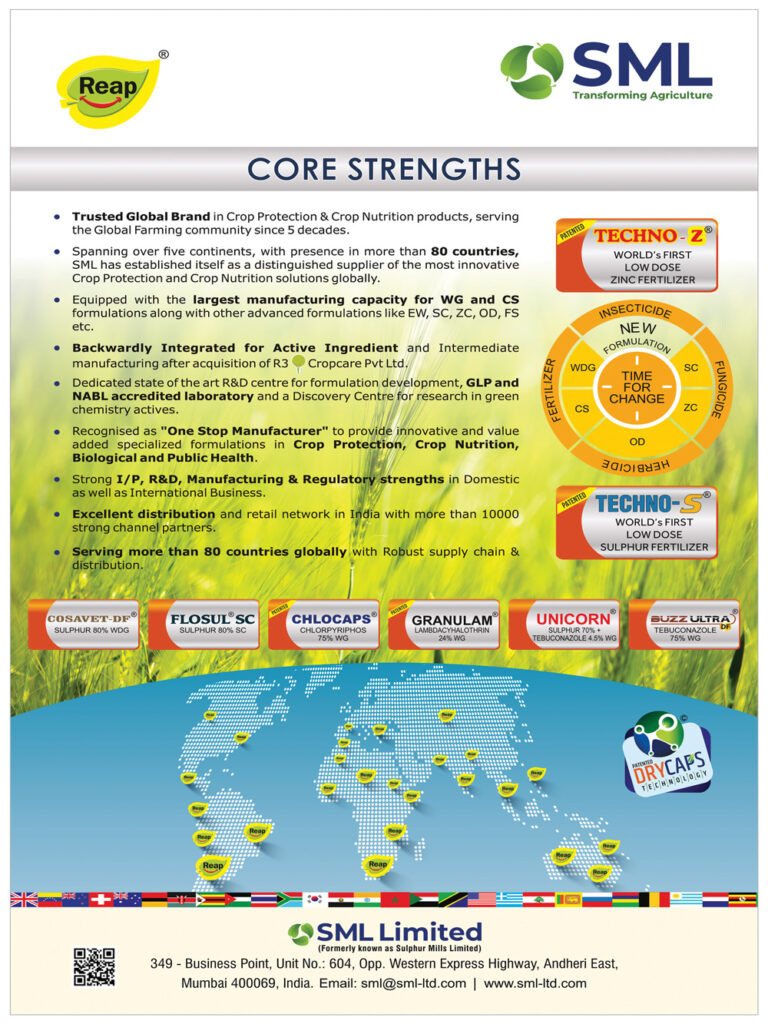The EU’s 7 Challenges for Biological Companies and How to Overcome Them
Scroll Down to Read
By Renee Targos
When thinking about launching a biological product in the European Union, one roadblock immediately comes to mind—the region’s regulatory system.
In February of this year, EU growers protested in the streets about many grievances—including the increasing restrictions of the Green Deal and growers’ shrinking toolbox to combat pests and weeds. The EU growers’ limited choice of biological products is impacted by the EU’s backlogged registrations application process.

Mark Trimmer
Mark Trimmer, President and Founding Partner of DunhamTrimmer says, “We see a very small share for microbial products in Europe. It’s mainly dominated by pheromones, plant extracts, PGRs, and other mineral-type products that are used on a broad scale. And that’s really a response to the regulatory system. It just takes forever to get a microbial product on the market, especially if it’s a new species not previously approved as a biocontrol agent. If it’s something that has been registered in the past — a Bt, for example — that can enter the market a little bit more easily, but it still takes a very long time.”
A “long time” often translates into a slow and expensive death for most start-up biological companies trying to get into the market. While biocontrol products have a long road, EU regulations for biostimulants has improved with Regulation (EU) 2019/1009 bringing biostimulants under the fertilizer category.
Lawrence Middler, Biologicals Senior Analyst for AgbioInvestor says the biostimulants market is showing promise as growers look for ways to deal with abiotic stress. “Biostimulants could have a good opportunity over the coming years, also being boosted by sustainability targets to reduce fertilizer usage,” says Middler.
Biostimulants currently doing well are Corteva’s BlueN (Methylobacterium symbioticum strain Sb23) and Syngenta’s ISABION (Amino acids / C / N), CBC’s Plantech (amino acids / C (Organic) / N (Organic) products all have a significant place in the market according to AgbioInvestor.
As the EU continues to ban products like fungicides (e.g. mancozeb) and insecticides (e.g. neonicotinoids), Middler says, “There has also been a concerted effort to reign-in the use of emergency exemptions (derogations) which has further underlined the need for products to target problematic pests, a good example being the stem flea beetle.”
Read additional interview with Mark Trimmer.
Read additional interview with Lawrence Middler.
Seven Counters for Seven Challenges

Thomas Laurent
In addition to the EU’s regulatory challenges, launching a biological product faces several challenges. As in any good strategy, finding a counter to an obstacle is the way through. Thomas Laurent, CEO of Micropep and Middler give the following points to consider.
CHALLENGE 1: Fragmented Agricultural Market: The EU’s agricultural sector is highly fragmented, and farming practices vary widely from country to country.
“Companies must develop tailored solutions to meet local needs and comply with differing agricultural standards,” says Laurent. “Each country may require unique product adaptations to suit their farming methods and conditions.”
CHALLENGE 2: Farmer Training and Education: EU growers use biologicals often in an integrated pest management (IPM) program, which can be more complicated farming practices.
“It is crucial to train farmers to use these products properly,” says Laurent. “Biologicals require careful attention to application timing, soil and weather conditions, dosage, and co-application with other products. Farmers need to understand the complexity of biologicals and how they differ from the simpler, highly efficient chemicals they are used to. Training must take an agronomical approach, with clear parameters and regular follow-ups on meteorological conditions.”
CHALLENGE 3: Sustainability and Environmental Focus: With the Green Deal, the EU government and consumers are demanding sustainable practices.
“Companies must demonstrate the environmental benefits of their biological products alongside their efficacy,” says Laurent. “This makes it important to highlight how biologicals support sustainability and contribute to reducing chemical usage, which resonates well with European growers.”
CHALLENGE 4: Cost and Scalability: The EU’s small-scale, local farmers are as cost-conscious as large-scale U.S. farmers.
“The production of biological products is typically more expensive than chemical alternatives and finding a balance between efficiency and affordability is essential for success,” says Laurent.
CHALLENGE 5: Formulation and Stability: Biological molecules are often created with a restrictive shelf-life.
“Ensuring the product is stable and performs consistently under various conditions is a challenge that companies must address, particularly given Europe’s strict requirements for product quality and sustainability,” says Laurent.
CHALLENGE 6: Fierce Competition: Established markets such as France, Spain, and Italy, the product and company landscape is highly competitive.

Lawrence Middler
“Bringing a new product to those markets will rely on companies having a laser focus on filling gaps in the market, satisfying a number of factors such as lowering costs, efficacy, resistance management, product substitution and input efficiencies,” says Middler. “[These markets have] an appetite for wider product adoption, especially in row crops, and governmental sustainability targets should stimulate the market in the medium to longer term.”
CHALLENGE 7: Application Incentives: Some European countries, like France, have strict application limits for chemicals.
“This can serve as an incentive for farmers to adopt biologicals, as they are not included in these application indexes,” says Laurent. “Highlighting this advantage can be a valuable selling point.”
Photo Credits:
Mark Timmer, DunhamTrimmer; Thomas Laurent, MicroPep; Lawrence Middler, AgBioInvestor
Putting a CAP on Biologicals
The Common Agricultural Policy (CAP) encourages the adoption of biocontrol and other biological products by offering broader support for environmentally friendly agricultural practices. EU farmers receive indirect financial support for using biologicals through CAP programs.
The CAP provides various subsidies and grants to incentivize sustainable farming, which includes biological solutions as part of IPM and other eco-friendly approaches. This financial backing makes transitioning to biologicals more appealing for farmers looking to adopt greener practices.
However, if the EU decides to reduce the CAP budget, this could lead to a decrease in farm income and profitability, putting additional pressure on farmers to maintain operations. In such a scenario, the value of crop output could fall, and the financial attractiveness of using biologicals might diminish unless more targeted support is introduced. •
